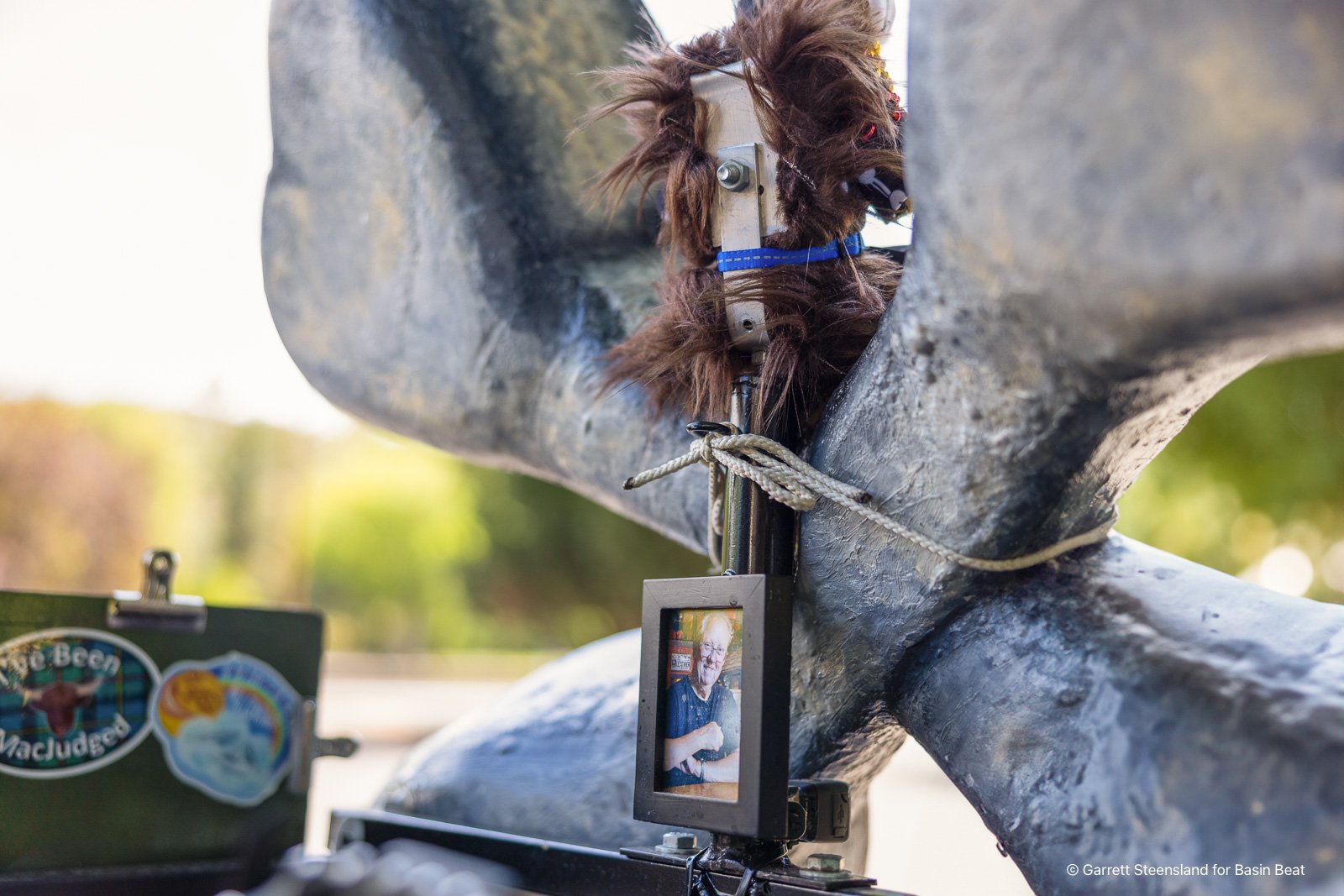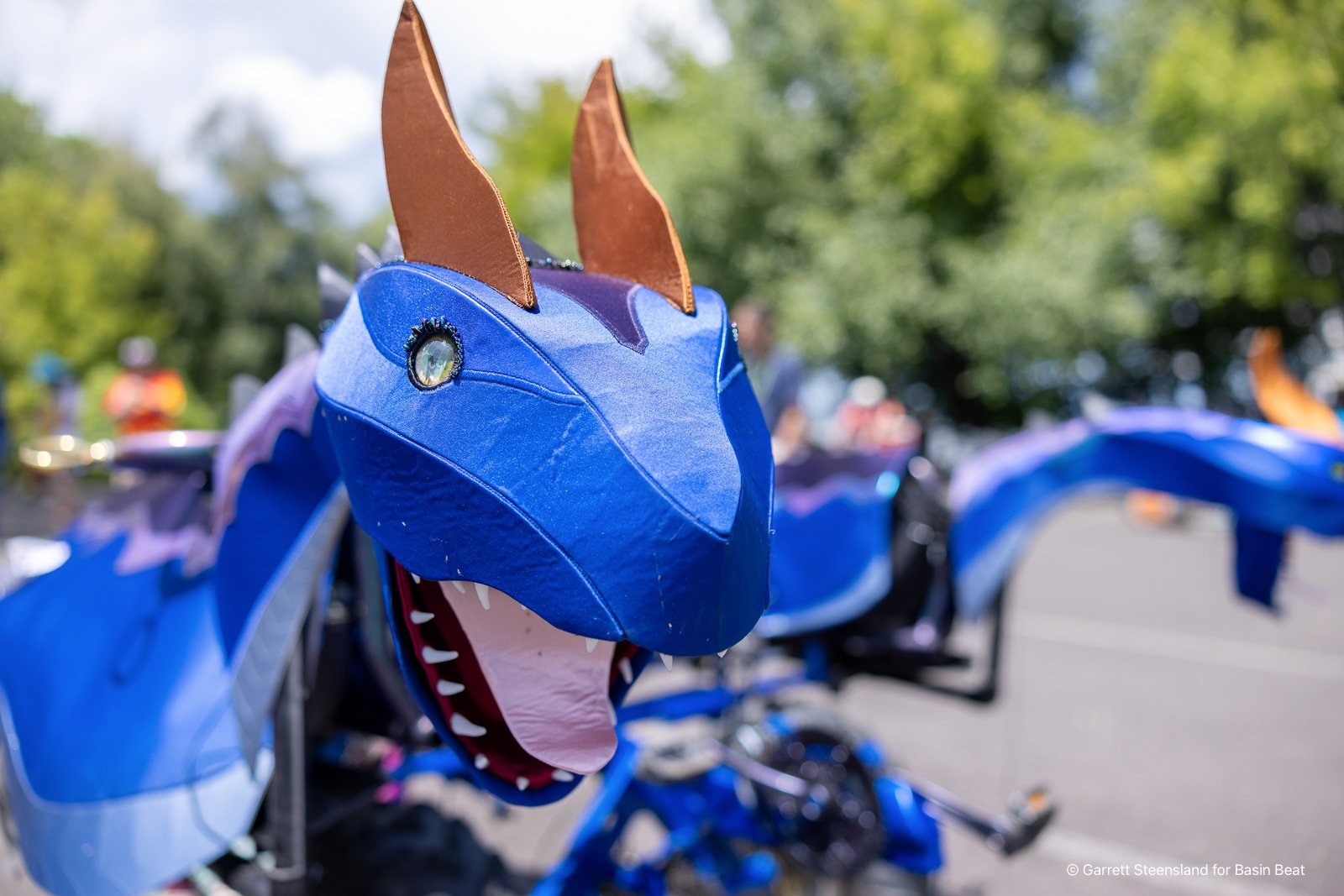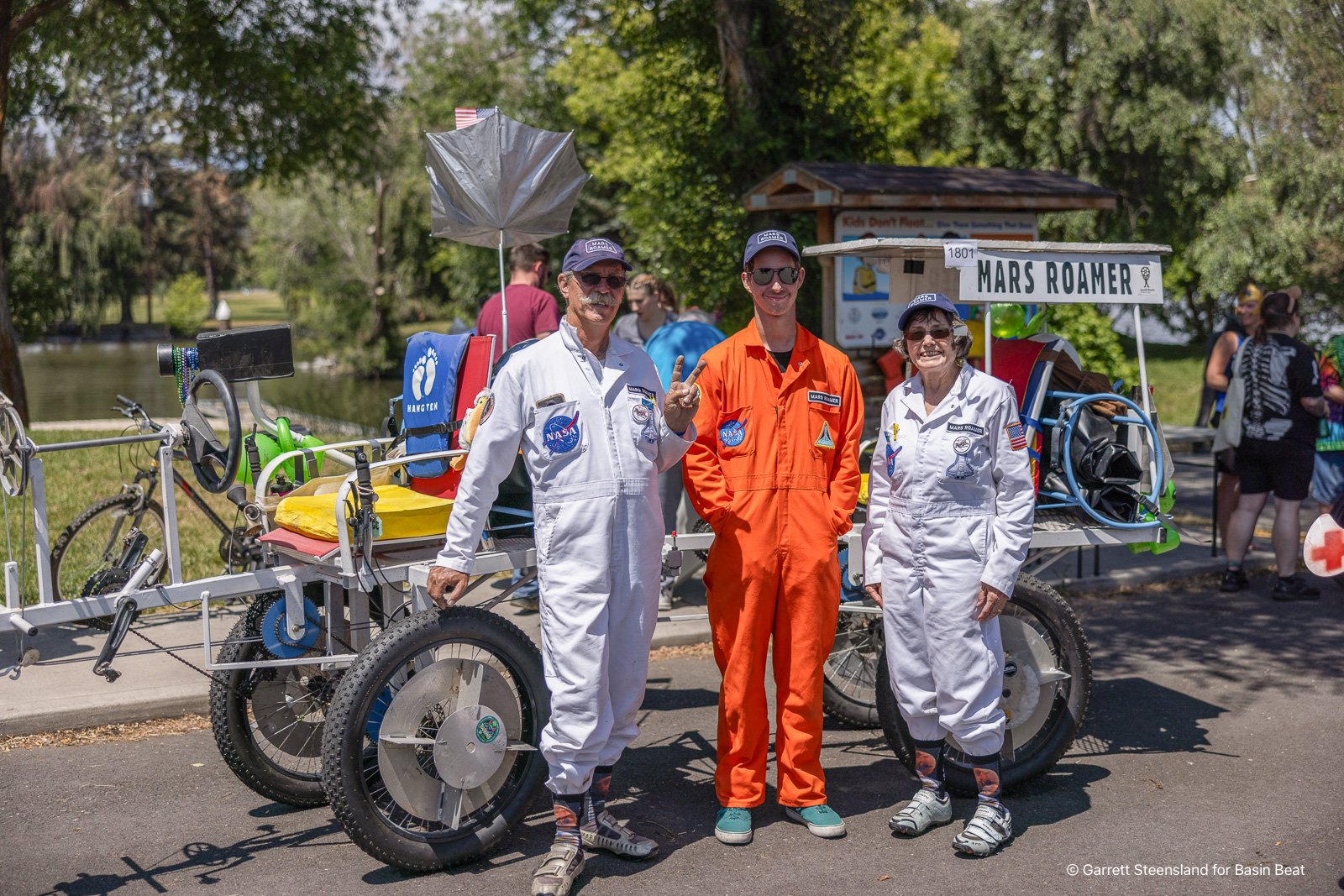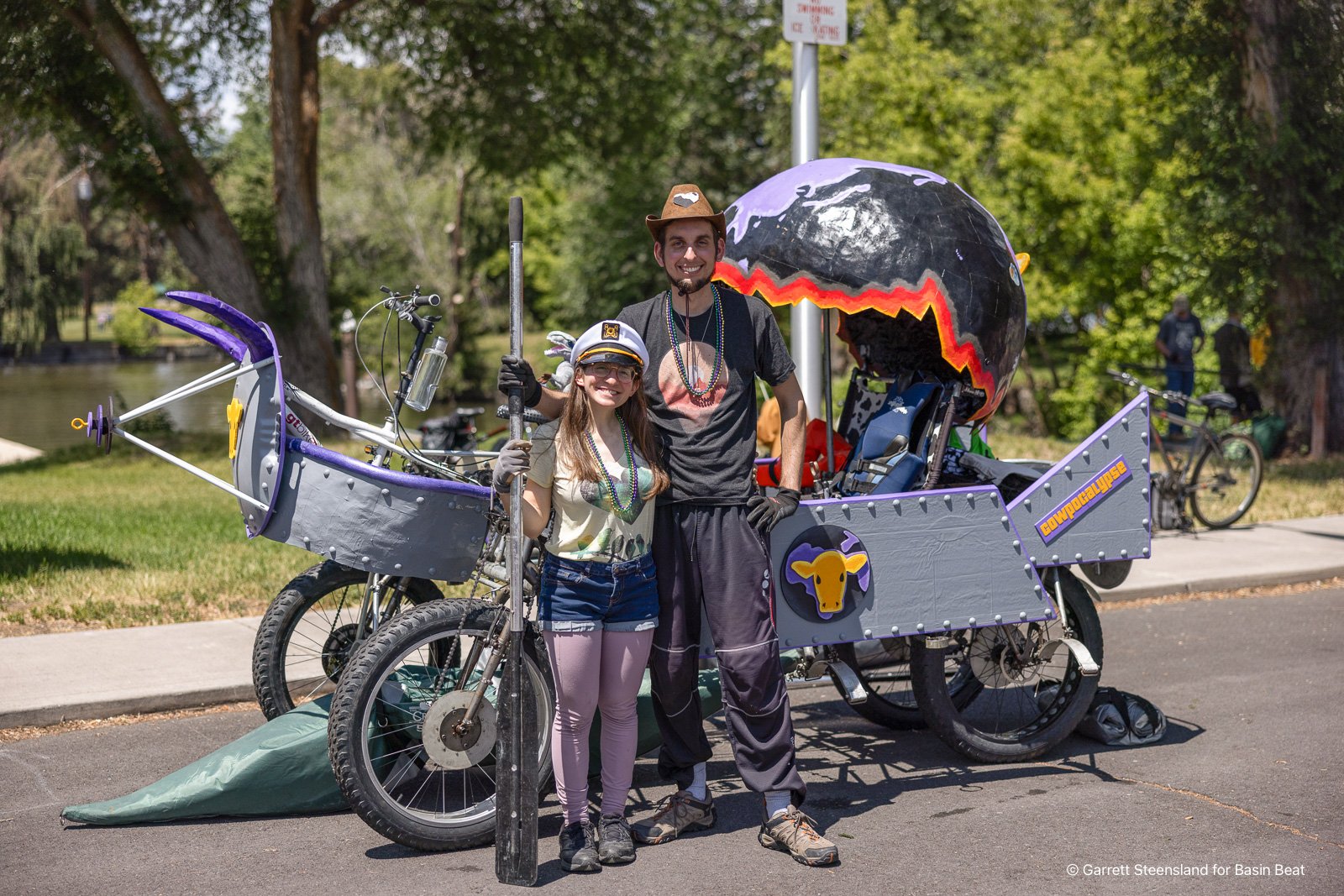Art in Motion
The 19th Annual Klamath Kinetic Challenge was held at Moore Park June 24-25. The three part race took human-powered and crazy engineered sculptures on a trail, through the sand, and across the water. (Image: Garrett Steensland)
Jim Brown voluntarily repaired a contestant’s sculpture with his welder that he had pre-prepared to aid in mid-race mishaps. (Image: Garrett Steensland)
KLAMATH FALLS, Ore. - With the many different activities that can be found locally, there is never a shortage of intriguing experiences. In addition to the Kruise this past weekend, a smaller group of abstract vehicles could be spotted in the most unexpected locations. A variety of people with unique ways of thinking had spent countless hours throughout the year in preparation for the Klamath Kinetic Challenge.
This group has discovered an unusual way to move and race their human-powered vehicles through gravel, dirt, sand, mud, water, and blacktop.
This two-day race is equipped with flare, pageantry, art, and engineering.
Pilots are challenged to drive their vehicles through various terrain for nearly four and a half miles. Starting in Moore Park, contestants maneuvered down the Link River trail, up towards the radio towers on Moore Mountain, and finally back down into Moore Park near the bike trails and through to the finish.
The second challenge was navigating a sand pit to test their sculptured devices through soft terrain.
On Sunday, racers installed flotation devices onto their creations to cross a section of Upper Klamath Lake from Marina 1 to Marina 2 along the shores of the Park.
Klamath Fall's own Heidi Kester pedaling and rowing her sculpture, the Hydra, in the final leg of water portion of the race. (Image: Garrett Steensland)
"A lot of times they make it, and other times they don't,” says Jim Brown, treasurer, and historian for the Klamath Kinetic Challenge, as he recalls a time a racer sunk his sculpture along with his wallet and $400.
When people ask why they want to keep doing these challenges, the answer is short and sweet, "It's for the glory; there's no other reason to do it," Brown says.
This last year was a hard one for the seven teams racing. Two of the most devoted participants had cardiac issues. One of which, unfortunately, didn't make it home from the hospital. In light of this unfortunate loss, inspiration was found in the grief.
Racers Nick and Erin Harris turned to the group for support in this difficult time. Their father, now gone, was their biggest fan and heart behind their team. They felt they had very little left to give and could not reproduce the effort needed to create the extreme and extravagant sculptures they had done in prior years.
With the raw emotions of loss, their drive and motivation to compete were reduced to bare-bones. Using this loss to propel their momentum, they went all in with the little they had to offer. And thus, the name of this year's structure was birthed, Bear Bones.
Dressed in bear ears, skeleton bone shirts, and a black and brown cart accented with rainbows and glitter, they entered their beautifully created sculpture into the race.
For another, the outcome of his cardiac issue was quite different. Just months before this event, racer Peter Wagner received extensive medical care in a hospital. This recovery and losing a dear friend strengthened his ability to outfit his BFG. The" Barely functioning Geriatric" structure has painted-on oxygen tanks, medical crosses, and his perfect sculpture flare - a hospital gown.
The seven participants of this triathlon embrace the world of art in the 19th annual Klamath Kinetic race.










